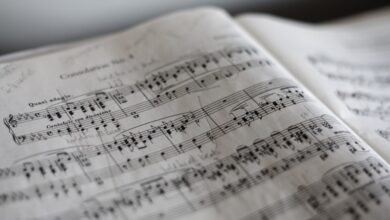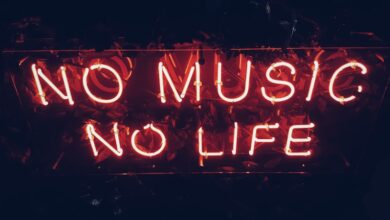Exploring the Role of Music in Transitional Justice and Peacebuilding

Music has long been recognized as a powerful tool that goes beyond mere entertainment. It possesses a unique ability to evoke emotions, bridge gaps, and facilitate healing. In the context of transitional justice and peacebuilding, music assumes an even more profound role, working as a catalyst for reconciliation, understanding, and unity.

At its core, transitional justice seeks to address past human rights abuses and promote accountability, while peacebuilding endeavors to foster sustainable peace in societies emerging from conflict or repression. Music plays a crucial role in both processes by providing a platform for expressing collective experiences, promoting dialogue, and fostering empathy among diverse communities.

One way in which music contributes to transitional justice is by preserving cultural heritage and memory. Through traditional songs, chants, and dances, communities can reconnect with their roots, heal historical wounds, and reclaim their identities. These musical expressions serve as a repository of stories and experiences, ensuring that the past is not forgotten and that future generations learn from the mistakes of the past.
Moreover, music serves as a medium for storytelling, amplifying the voices of survivors and marginalized groups. Through lyrics and melodies, artists can convey the pain, resilience, and aspirations of individuals impacted by violence or oppression. By giving voice to the voiceless, music empowers individuals to share their stories, demand justice, and challenge the prevailing narratives that perpetuate conflict.
In addition to its role in transitional justice, music also plays a vital part in peacebuilding efforts. It has the power to transcend language barriers, cultural differences, and political divides, making it a universal language that unites people. Whether through collaborative performances, music festivals, or community singing events, music brings people together, fostering a sense of belonging, shared humanity, and common purpose.
Furthermore, music promotes dialogue and reconciliation by creating spaces for open and respectful conversations. It encourages active listening, empathy, and understanding among conflicting parties. As melodies intertwine and harmonies emerge, the transformative power of music becomes evident, breaking down barriers and building bridges between communities divided by years of animosity.
The role of music in transitional justice and peacebuilding is awe-inspiring. It acts as a conduit for truth, healing, and social transformation. By preserving cultural heritage, amplifying voices, fostering dialogue, and promoting unity, music transcends its artistic boundaries to become an instrument of change and a beacon of hope in societies seeking justice and sustainable peace.
Harmony for Healing: How Music is Powering Transitional Justice and Peacebuilding
Introduction:
Have you ever experienced the transformative power of music? From soothing melodies that calm our souls to uplifting beats that make us want to dance, music has a unique ability to touch our emotions and bring people together. In the realm of transitional justice and peacebuilding, music has emerged as a powerful tool that helps societies heal and move forward. In this article, we will explore how music fosters harmony, facilitates healing, and contributes to the restoration of peace in post-conflict communities.
Healing Through Rhythms:
When words fail, music speaks. In the aftermath of conflicts and atrocities, deep wounds persist within individuals and communities. Music provides a universal language that surpasses linguistic and cultural boundaries, allowing survivors to express their pain, grief, and hopes for a better future. Whether it’s through haunting melodies or resonant lyrics, music becomes a vessel for emotional release, catharsis, and collective healing.
Building Bridges between Divided Communities:
In divided societies, music acts as a bridge, connecting people who have been torn apart by violence and mistrust. It transcends differences, uniting individuals from various backgrounds and fostering empathy and understanding. Musicians often collaborate across traditional divides, bringing together diverse voices and narratives. Through shared musical experiences, communities can find common ground, promote dialogue, and mend fractured relationships.

Amplifying Voices of the Marginalized:
Music empowers marginalized communities, giving voice to those who have been silenced or ignored. In post-conflict settings, where certain groups may have endured systematic oppression, music becomes a platform for storytelling, advocacy, and empowerment. By highlighting the struggles and aspirations of the marginalized, music challenges existing power structures and promotes social justice, contributing to the overall process of transitional justice.

Inspiring Hope and Resilience:
In times of despair, music has the remarkable ability to inspire hope and resilience. It fuels the human spirit, reminding individuals that they are not defined solely by their past traumas but also by their capacity for healing and growth. Through uplifting melodies and lyrics that convey messages of unity, forgiveness, and reconciliation, music instills a sense of optimism, fostering an environment conducive to peacebuilding efforts.
Conclusion:
In the realm of transitional justice and peacebuilding, music acts as a catalyst for healing, reconciliation, and social transformation. Its universal language transcends barriers, bringing together divided communities and amplifying the voices of the marginalized. By inspiring hope and resilience, music paves the way for sustainable peace and lays the foundation for a harmonious future. Let us embrace the power of music as we strive for justice and peace in our world.
Striking the Right Chords: Unveiling Music’s Impact in Post-Conflict Societies
Introduction:
In the aftermath of conflict, societies strive to heal wounds and rebuild a sense of unity. While numerous approaches are taken to restore stability, one powerful tool has proven its ability to transcend barriers and foster reconciliation: music. The harmonious melodies and rhythmic beats have a profound impact on individuals and communities, offering solace, hope, and a shared language that can bridge divides. Let us explore how music plays a transformative role in post-conflict societies.
Healing Through Harmony:
Music serves as a universal language that speaks directly to our hearts. In post-conflict societies, where emotions run deep and scars are still fresh, music acts as a healing balm. Its melodies have the power to soothe troubled souls, providing an outlet for emotional expression. Whether through traditional folk tunes or contemporary compositions, music taps into the collective resilience of communities, helping individuals process their pain and find solace. It brings people together, fostering a sense of belonging and providing a safe space for collective healing.
Building Bridges:
Beyond its therapeutic benefits, music acts as a powerful agent of unity and reconciliation. When words fail, melodies can communicate what is often difficult to express. By embracing music, post-conflict societies create opportunities for dialogue and understanding among diverse groups. Musicians from different backgrounds come together, transcending cultural, ethnic, and religious boundaries. Through collaborative performances and intercultural exchanges, music becomes a catalyst for building bridges, dismantling prejudices, and forging connections that go beyond superficial differences.
Empowering Voices:
In post-conflict societies, music empowers individuals and communities by giving them a voice. It offers a platform for marginalized groups, enabling them to share their stories, hopes, and aspirations. Music becomes a vessel for advocating social justice, human rights, and equality. It amplifies the voices of those who have been silenced, providing a means to address the injustices of the past and work towards a brighter future. Through music, individuals find empowerment, reclaim their identities, and contribute to the collective narrative of their society.
Conclusion:
In the symphony of post-conflict societies, music emerges as a powerful force for healing, unity, and empowerment. Its ability to evoke emotions, bridge divides, and empower voices makes it an invaluable tool in the journey towards reconciliation. By embracing music, societies can strike the right chords that resonate with their shared humanity, paving the way for a harmonious future. Let us recognize the transformative power of music and unleash its potential in building a better world together.
From Wounds to Melodies: The Transformative Journey of Music in Reconciliation
In the aftermath of conflict and division, where hearts are wounded and communities torn apart, an unexpected force has emerged as a powerful agent of healing: music. Through its universal language, melodies have the ability to transcend barriers and bring people together, fostering reconciliation in the most unlikely of places.
Music possesses a unique capacity to touch our souls and evoke emotions that words alone cannot convey. It has the power to unite disparate voices, bridging divides and creating harmony where once there was discord. Whether it be through singing, playing instruments, or simply listening, music has the remarkable ability to heal wounds and transform lives.
When individuals and communities engage in making music together, they embark on a journey towards reconciliation. As they collaborate and synchronize their efforts, they learn to listen, understand, and appreciate each other’s perspectives. Music becomes a shared experience that fosters empathy, compassion, and understanding, allowing for the mending of broken relationships.
Moreover, music transcends cultural and linguistic boundaries, speaking directly to the heart. It has the ability to convey messages of peace, hope, and unity without the need for translation. Through its melodies, music connects people on a deep emotional level, reminding us of our shared humanity and the common ground we all stand upon.
Music’s transformative power has been witnessed in various contexts around the world. In post-conflict societies, music has played a vital role in healing deep-rooted wounds. It has been used to give voice to the voiceless, allowing survivors to express their pain, anger, and resilience. Through songs and melodies, individuals find solace, strength, and a sense of belonging.

The journey of music in reconciliation is a testament to the extraordinary ability of melodies to heal, unite, and transform. As we embrace the power of music, we open doors to understanding and create spaces for dialogue and healing. Let us recognize the melodies that lie within our wounds, for they hold the key to a harmonious future, where reconciliation becomes not just a dream, but a tangible reality.
Notes of Hope: How Music Inspires Unity and Rebuilding in Divided Communities
In a world often fragmented by differences, music has an extraordinary power to bridge divides and bring people together. From timeless classics to contemporary compositions, the universal language of music transcends barriers of language, culture, and ideology. It has the remarkable ability to inspire hope, heal wounds, and foster unity in even the most divided communities.
When words fall short, melodies soar, and rhythms resonate deeply within our hearts. Music taps into our emotions, evoking a range of feelings that connect us on a profound level. Whether it’s a soul-stirring symphony or an infectious beat, the power of music lies in its ability to transcend boundaries and create harmony where discord once prevailed.
Imagine a war-torn region, ravaged by conflict and strife. Amidst the ruins and despair, music emerges as a beacon of hope. Musicians from different backgrounds come together, setting aside their differences to create something beautiful. Their melodies become a testament to the resilience of the human spirit, inspiring others to find common ground and work towards rebuilding their shattered communities.
Music has the power to tell stories and amplify voices that are often unheard. Through poignant lyrics and powerful melodies, it brings attention to social injustices, inequalities, and the struggles faced by marginalized communities. It serves as a platform for advocacy and activism, galvanizing individuals to take action and create positive change.
In divided communities, music acts as a catalyst for dialogue and understanding. It creates spaces where people can come together, share their experiences, and find empathy in the notes and lyrics. Through collaborative musical projects, diverse groups learn to appreciate each other’s perspectives, fostering a sense of belonging and acceptance.
Just as a conductor guides an orchestra, music has the potential to orchestrate unity in divided communities. It breaks down walls, builds bridges, and enables individuals to see beyond their differences. It reminds us of our shared humanity and shows that despite the divisions, we are all connected through the music that resonates within us.
Music is a powerful force that transcends boundaries and inspires unity in divided communities. Its ability to evoke emotions, amplify voices, and create spaces for dialogue makes it an invaluable tool for rebuilding and healing. Through the language of music, we can find hope, foster understanding, and work towards a future where harmonious coexistence prevails.




